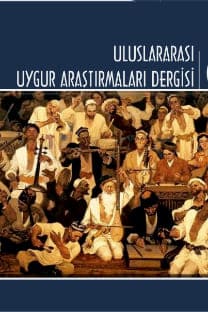Karşılaştırmalı Çalışmaların Mitopoetiğe Uygulanması: İzlanda ve Türk Folklor Metinlerinde Tekrarlar
Karşılaştırmalı edebiyatın gelişim dönemine bakarsak, bunun XIX yüzyıldaki romantizm aşamasına geçişten kaynaklandığını görebiliriz. Bir yön olarak karşılaştırmalı edebiyatın oluşumu öncelikle folklor bilimimin gelişimi ile bağlantılıydı. V. ve Y. Grim Brothers tarafından masalların toplanması ve incelenmesi ile ilgili olarak verilen ilk çalışmalar, kurumsallaşma açısından folklorun gelişimine ivme kazandırdı. Bu karşılaştırmalar, plan güdüsü uyumluluğu, aktarımı ve genetik ilişkiler bağlamında incelendiğinde, mitin şiirselleri göz ardı edilmemiştir. Folklorda yaygın olan tekrarların neredeyse tüm ulusların folklorunda bir yeri olması özellikle dikkat çekicidir. Bu fenomenin kökeninde, her şeyden önce sosyo-psikolojik faktör vardır. Bu nedenle, büyüyə inancın bir ifadesi olarak ortaya çıkan tekrarların hem Türk hem de Avrupa halklarının folkloruna yansıdığı gerçeği, tipolojik bir uygunluk olarak değerlendirilebilir. Bunun bir kanıtı olarak, araştırma İzlanda eposu "Büyük Edda" ve "Kitabi-Dede Korkut" dan örnekler içermektedir. Bu örnekler karşılaştırıldığında, tekrarların esas olarak büyüyü arttırmaya hizmet ettiği açıktır. Her iki metindeki tekrarların aynı işlevi yerine getirmesi, bunun sosyo-psikolojik bir faktörün sonucu olduğunu kanıtlamaktadır.
Anahtar Kelimeler:
Karşılaştırmalı Çalışmalar, Türkçe, Avrupa, Tekrar, Tipoloji
Application of Comparative Studies to Mythopoetics: Repetitions in Icelandic and Turkish Folklore Texts
If we look at the period of development of comparative literature, we can see that this is due to the transition to the stage of romanticism in the XIX century. The formation of comparative literature as a direction was first of all connected with the development of my science of folklore. The first name given by V. and Y. Grim Brothers in connection with the collection and study of fairy tales gave impetus to the development of folklore from the point of view of corporateism. The poetics of the myth was not overlooked when these comparisons were studied in the context of plot motive compatibility, transmission, and genetic relationships. It is especially noteworthy that repetitions, which are widespread in folklore, have a place in the folklore of almost all nations. At the root of this phenomenon is, first of all, the socio-psychological factor. For this reason, the fact that the repetitions that appear as an expression of magical thought are reflected in the folklore of both the Turkic and European peoples can be assessed as a typological correspondence. The fact that repetitions, which appear in primitive thought as an expression of magical belief, are reflected in the folklore of both the Turkic and European peoples, can be considered as a typological correspondence. As evidence of this, the study cited examples from the Islamic epic "Great Edda" and "Kitabi-Dada Gorgud". When comparing these examples, it becomes clear that repetitions mainly serve to enhance magic. The fact that the repetitions in both texts perform the same function proves that this is the result of a socio-psychological factor.
Keywords:
Comparative Studies, Turkish, European, Repetition, Typology,
___
- BƏYDILLI C. (Cəlilov), (2000) Qam-şamançılığın etnomədəniyyətimizdə yeri. Bakı, Ağrıdağ, 204 c.
- KİTABİ-DƏDƏ QORQUD, (1988) Bakı, Yazıçı, 266 s.
- SULTANLI Ə. Dədə Qorqud dastanı haqda qeydlər //Məqalələr. Bakı, 1968, ADU, 327 s.
- HERMAN P., Deutche Mithologie, Aufbau Verlagsgruppe (1991) GmbH, Berlin 374 s.
- Beofulf. Starşaya Edda. Pesn o nibelunqa. (1975) M., Xudojestvennaya Literatura,750 s.
- Makayev E.F. (1965) Yazık drevneyşix runiçeskif nadpisey. M., Nauka, 155 s.
- Meletinskiy E.M. “Edda” i rannie formı eposa (1968) M., Nauka, 1968, 368 s.
- Başlangıç: 2013
- Yayıncı: Adem ÖGER
Sayıdaki Diğer Makaleler
Sibirya’da Türk İzleri: Yenisey Yazıtları
XIX әсир тәсәввуф шеирийити нәмуниси - XIX. Asır Tasavvuf Şiiri Örneği
Azerbaycan Basınından Edebiyat Gazetesi (1934-1945)
Türkistan Hanlıklarına Ait Belgelerde Geçen Meslek ve Unvan Adları
Uygur Halk Mizahında Anlatmalık Türler ve İcracıları
Uygur Sivil Belgeleri Işığında Eski Uygurlarda Üzüm Yetiştiriciliği
Yeni Uygur Atasözlerinin Yönelim Metaforları Açısından İncelenmesi
Kazak “Muńlıq-Zarlıq” Destanında Bir Dev Tipi: Mıstan Kempir
Memettursun Zunun Oqya, Qisqiçe Uyğur Örp-Adetliri Qamusu, 2 Cilt, Londra 2019, 1807 s.
Sovyet Sosyalist Cumhuriyetler Birliği ve Gürcistan’ın Bu Birliğin Üyesi Olmasındaki Yeri
